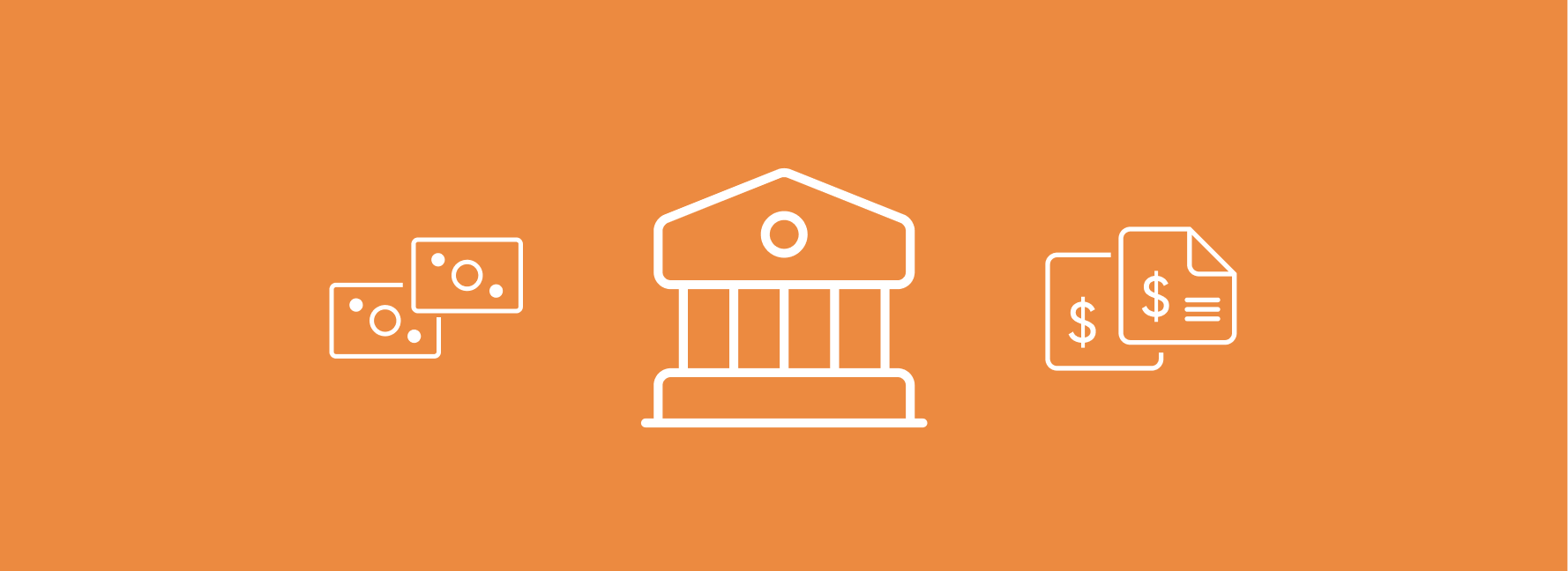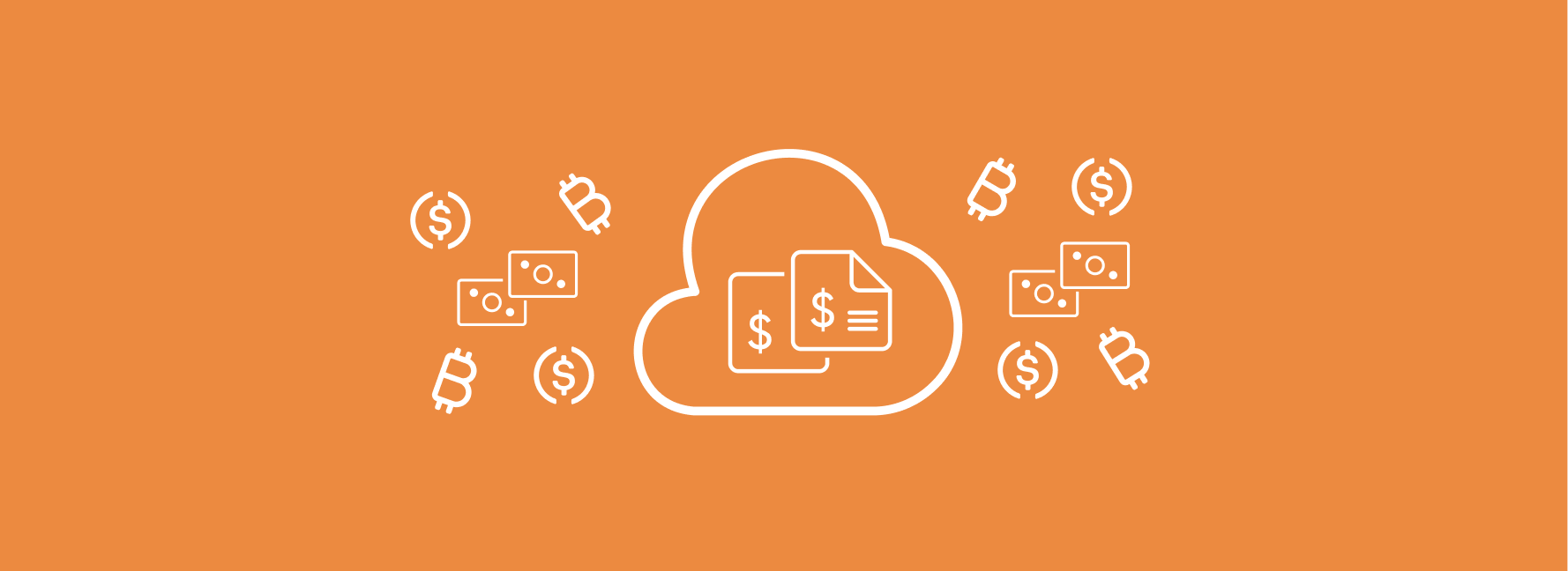O que são os Títulos do Tesouro dos EUA?
Os Títulos do Tesouro dos EUA, também conhecidos como T-Bills, são títulos de dívida de curto prazo emitidos pelo Departamento do Tesouro dos EUA. Os T-Bills são considerados um ativo do mundo real e um dos investimentos mais seguros possíveis, pois são respaldados pela plena fé e crédito do governo dos Estados Unidos.

Como funcionam os Títulos do Tesouro?
Os T-Bills são instrumentos financeiros de curto prazo emitidos pelo Tesouro dos EUA, com períodos de vencimento que variam de alguns dias a um ano.
Os vencimentos mais comuns são de 4, 8, 13, 26 e 52 semanas. Em média, quanto maior o prazo de vencimento, maior a taxa de juros que o T-Bill pagará ao investidor.
Diferente de muitos outros tipos de títulos, os Títulos do Tesouro dos EUA não pagam dividendos regulares. Em vez disso, os T-Bills são vendidos com um desconto sobre seu valor de face. Quando o T-Bill vence, o investidor recebe o valor total de face.
Compreendendo o rendimento dos T-Bills
A diferença entre o preço de compra e o valor de face de um Título do Tesouro dos EUA representa o juros ganho. Os números importantes a serem compreendidos são o Preço de Compra, o Rendimento com Desconto Anualizado e o Rendimento até o Vencimento.
Preço de Compra
O preço de compra pode ser determinado pela seguinte fórmula, onde “F” é o valor de face (normalmente $1.000), “P” é o preço de compra, “t” é o tempo até o vencimento (em dias) e “R” é o rendimento com desconto anualizado:
P = F/(1-tR/360)
Examplo 1: Um título de 28 dias no valor de $1.000 é vendido em leilão com um rendimento com desconto anualizado de 4,2%.
Preço = 1000 (1 – (0,042 × 28)/360) = $996,73. Isso significa que o título é vendido por $996,73, oferecendo um desconto de $3,27. Quando você recebe $1.000 após 28 dias, terá ganho $3,27 em "juros".
Rendimento com Desconto Anualizado
O rendimento com desconto anualizado é o rendimento cotado para os T-Bills dos EUA. Ele é calculado com base em juros simples (ou seja, sem capitalização) em um ano de 360 dias e expresso como uma porcentagem do valor de face do título. A fórmula utilizada é:
Rendimento com Desconto Anualizado = [(F – P)/F] x (360/t)
Examplo 2: Você paga $996,73 por um T-Bill de 28 dias. Ele vale $1.000 no vencimento. O rendimento com desconto anualizado é: (1000-966.73)/1000*360/28 = 4.2%
Rendimento até o Vencimento (YTM)
A métrica mais importante – útil para entender o retorno que os investidores obterão de um Título do Tesouro – é o Rendimento até o Vencimento (YTM). O YTM é o rendimento anualizado do título, baseado em um ano de 365 ou 366 dias. Ele assume que o investidor manterá o título até o vencimento.
YTM = (F-P)/P*365/t
Examplo 3: Continuando a partir do Exemplo 2, o YTM é: (1000-966.73)/966.73 * 365/28 = 4.28%

O que influencia os preços dos T-Bills?
Muitos fatores podem influenciar os preços dos T-Bills, incluindo política monetária, mudanças nas taxas de juros, período de vencimento, tolerância ao risco do mercado e inflação.
Taxas de Juros
Existe uma relação inversa entre as taxas de juros e os valores dos T-Bills. Quando as taxas de juros do mercado aumentam, os preços dos T-Bills geralmente caem no curto prazo, e vice-versa. Isso ocorre porque novas emissões de T-Bills serão vendidas com um desconto maior (taxa de juros mais alta) após um aumento na taxa, reduzindo o valor dos T-Bills existentes.
É fundamental entender que os investidores ainda receberão o valor de face completo dos T-Bills na data de vencimento, independentemente das flutuações de preço durante o período de posse.
Os investidores sempre receberão o valor nominal integral de uma T-bill quando ela atingir o vencimento. As flutuações do preço de compra da T-bill só impactam aqueles que buscam vender antes do vencimento.
Por fim, vale ressaltar que as taxas de juros flutuam diariamente, não necessariamente em decorrência da intervenção do Banco Central.
Vencimento
T-Bills com vencimentos mais longos tendem a oferecer retornos maiores do que aqueles com vencimentos mais curtos.
Isso ocorre porque há uma maior chance de aumento das taxas de juros ao longo do tempo, o que representa um risco maior embutido no preço.

O que são os "on-the-run" T-Bills?
Os T-Bills "on-the-run" são os títulos mais recentemente emitidos de um determinado prazo. Sempre que um novo lote de T-Bills é criado e vendido pelo governo, ele se torna a emissão "on-the-run" vigente.
Examplo 4: Um novo lote de T-Bills de 52 semanas é emitido hoje (Conjunto A). Eles agora são os "on-the-run". Se um novo lote (Conjunto B) for emitido no próximo mês, o Conjunto A será considerado "off-the-run", e o Conjunto B se tornará "on-the-run".
Como há menos T-Bills "on-the-run", eles são os mais negociados e os mais líquidos. Isso geralmente significa que são ligeiramente mais caros e oferecem um rendimento menor do que os T-Bills "off-the-run".
Normalmente, quando o preço ou os rendimentos dos títulos do Tesouro são mencionados na mídia, eles se referem à emissão em andamento.
O que é um Retorno Roll-Down?
Como mostrado acima, a taxa de juros em títulos de longo prazo geralmente será maior do que o rendimento obtido em títulos de curto prazo.
Em geral, à medida que a data de vencimento se aproxima, a taxa de juros de um título se aproxima de zero.
Isso permite uma estratégia de negociação de títulos chamada roll down, que é executada pela compra contínua de T-bills em andamento e pela venda bem antes de atingirem sua data de vencimento
Como o preço de compra de um T-bill geralmente aumenta ao longo do tempo, os investidores podem ganhar dinheiro "rolando" a curva de rendimento "para baixo".
Examplo 4: Um título de US$ 1.000 de 28 dias é vendido em leilão por um rendimento de desconto anualizado de 4,2%, enquanto um título de 7 dias é vendido por um rendimento de desconto anualizado de 3,6%. Após três semanas, a nota de 28 dias se torna uma nota de 7 dias. Como a diferença no rendimento entre o vencimento de 28 dias e o vencimento de 7 dias é de 0,8%, o título de 7 dias pode subir 0,8% antes de ultrapassar o YTM de 4,2%.

Tokenizando Títulos do Tesouro dos EUA
No contexto Web3, tokenização refere-se ao conceito de converter ativos do mundo real, como T-Bills, em um token digital que pode ser mantido, negociado e transferido em uma blockchain.
Normalmente, empresas que oferecem tokenização de ativos físicos compram e mantêm reservas desses ativos, emitindo um token lastreado nessas reservas.
Como os T-Bills são tokenizados?
Os Títulos do Tesouro podem ser tokenizados sendo adquiridos por uma entidade e mantidos em reserva em um "pool". A entidade então emite tokens que representam uma participação nesse pool.
Esses tokens funcionam como criptomoedas, beneficiando-se de características como imutabilidade, velocidade de transação e transparência.
Quais são os benefícios da tokenização de T-bills dos EUA?
Ao tokenizar T-bills dos EUA, muitos novos benefícios são adicionados a esses instrumentos já populares. Esses benefícios são possíveis graças à tecnologia blockchain, que alimenta os tokens que representam uma participação no pool geral. Esses benefícios incluem:
Acesso mais amplo ao rendimento dos T-bills dos EUA
A tokenização de T-bills permite que eles sejam comprados, vendidos, mantidos e negociados com muito mais facilidade por indivíduos fora dos EUA.
Normalmente, um investidor na América Latina ou na África que deseja investir em T-bills dos EUA precisaria passar por um processo demorado de conversão de sua moeda local para USD, encontrar uma corretora online disposta e licenciada para vender títulos no exterior, transferir os USD (com taxas elevadas) e gerenciar manualmente qualquer estratégia de negociação, como a compra das emissões "on-the-run".
A tokenização permite que fintechs ofereçam os tokens aos seus usuários locais em troca de USDC, sem a necessidade de trilhas de pagamento transfronteiriças ou taxas. Isso significa que muito mais pessoas ao redor do mundo podem se beneficiar de um dos investimentos mais seguros disponíveis.
Estratégias automáticas de Roll-Down
Normalmente, um provedor de T-bills tokenizados gerencia a estratégia de negociação de sua reserva de títulos do tesouro. Tradicionalmente, isso se refere à maximização do rendimento por meio do "roll-down" da curva de rendimento, conforme explicado anteriormente.
Os investidores que não querem ou não podem gerenciar manualmente sua estratégia de negociação podem, em vez disso, comprar títulos tokenizados e garantir que o rendimento recebido foi automaticamente otimizado.
Novos tipos de colaterais
Tradicionalmente, os T-bills dos EUA representam um investimento seguro para armazenar economias e obter rendimento. Se essas economias precisarem ser usadas como colateral, os T-bills devem ser liquidados em dinheiro.
A tokenização de ativos do mundo real, como T-bills, apresenta novas oportunidades de colateral. Isso inclui a possibilidade de usar os tokens de criptomoeda que representam uma participação no pool de T-bills diretamente como colateral.
Isso permite que uma entidade que precisa de colateral receba um token altamente líquido e resgatável em dinheiro, que continua gerando rendimento para seu proprietário, ao contrário do dinheiro.
Como oferecer rendimento de T-bills dos EUA tokenizados?
Empresas que desejam oferecer a seus usuários T-bills dos EUA tokenizados (sem a necessidade de comprar diretamente os títulos, emitir uma criptomoeda, comprovar reservas e gerenciar estratégias de rendimento) podem integrar sua plataforma à infraestrutura necessária para se conectar a pools de rendimento de T-bills tokenizados.
O que é necessário para oferecer rendimento de T-bills dos EUA tokenizados?
Carteiras de Criptomoedas
Carteiras de criptomoedas são necessárias para iniciar transferências de entrada e saída dos pools de rendimento de T-bills tokenizados. Para mais informações sobre como as carteiras de criptomoedas funcionam, veja nosso guia.
On & Off Ramps
É necessária uma solução para converter moedas fiduciárias locais em stablecoins, como USDC – que são depositadas nos pools de rendimento de T-bills tokenizados em troca dos tokens do pool. Além disso, os usuários precisam de uma forma de resgatar suas stablecoins de volta para moeda fiduciária local de maneira eficiente.
Registro de Transações
Além das carteiras, é necessário um sistema para registrar e exibir transações – incluindo depósitos, saques e rendimento acumulado – para que os usuários possam acompanhar suas operações.
A Conduit pode ajudar
A plataforma completa da Conduit permite que fintechs se conectem a pools de T-bills tokenizados de maneira fácil, segura e compatível com regulamentações vigentes.
Com uma única API, as fintechs podem oferecer aos seus usuários acesso a um investimento seguro e altamente líquido fora dos EUA.
Para uma demonstração de nossa plataforma, entre em contato conosco hoje mesmo.









